Tangy, glossy broth filled with ingredients of diverse flavours and textures, hot and sour soup is hearty, comforting and delectable. Learn to make it the authentic Chinese way.
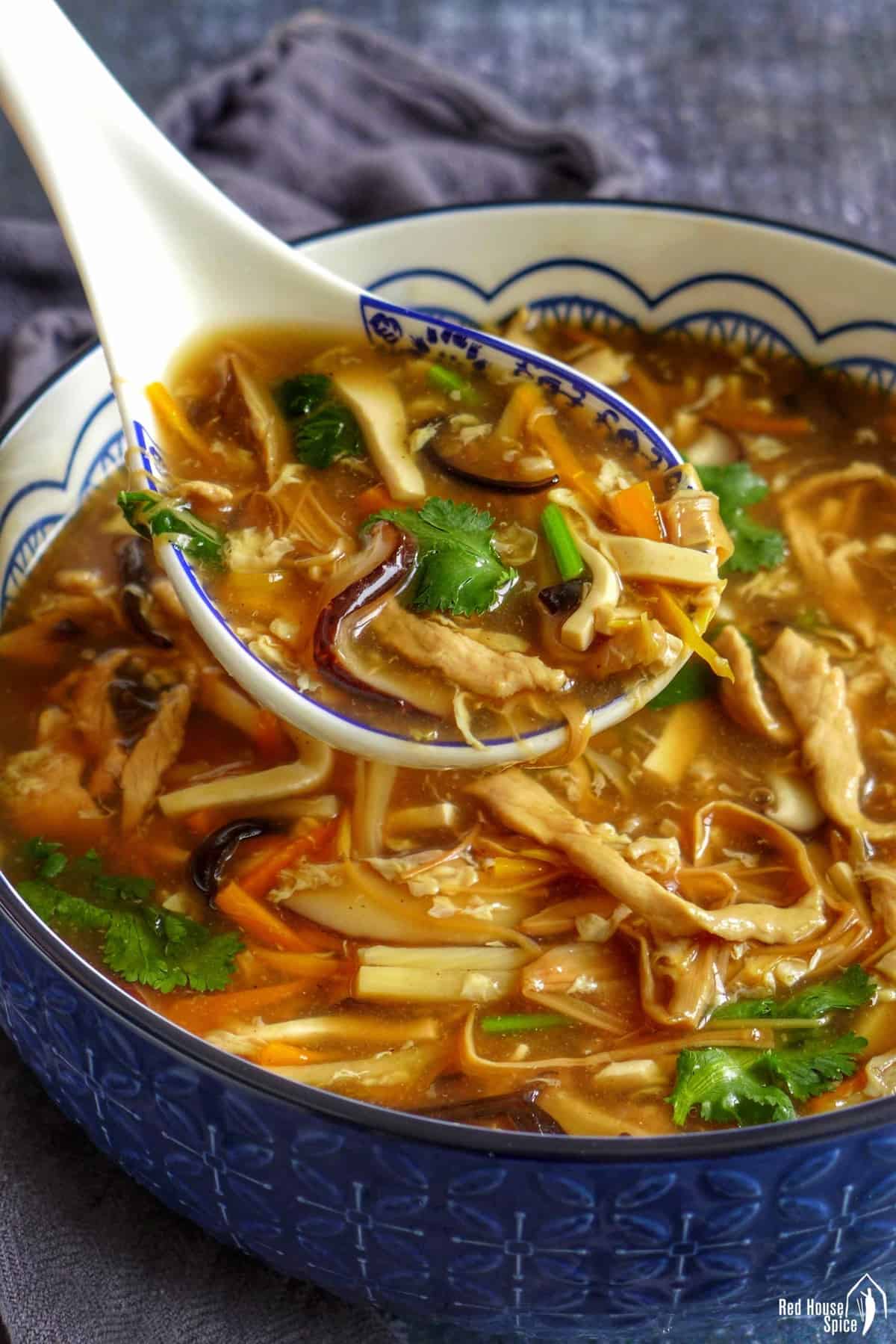
Jump to:
What is hot and sour soup
One of the most ordered dishes in Chinese restaurants and takeaways outside China, hot and sour soup (Suan La Tang, 酸辣汤) has gained popularity across the globe.
There is a lot going on in this simple soup. Apart from seasoning condiments and a thickening agent, authentic hot and sour soup calls for eight ingredients: three types of protein, three dried ingredients and two vegetables. They provide different flavours, textures and nutrition, making this dish sophisticated and substantial.
You’ll need to slice everything (apart from the egg) into thin strips. Not only does the uniformed size make the dish aesthetically pleasing, it also ensures that everything is cooked in a short period of time.

Why this recipe
Having lived abroad for years, I’ve tasted many versions of hot and sour soup. Some reminded me of the taste of home while others were largely modified. I’d like to share a recipe that reflects how my dad, like many Chinese home cooks, prepare this classic dish.
What makes a bowl of hot and sour soup stand out? Here are my criteria:
- A variety of ingredients that differ in taste, texture and nutrients
- A strong but balanced hot and sour flavour
- A perfect consistency that’s thick enough to coat your soup but not overly starchy
Main ingredients

Three proteins
- Pork: To achieve a tender texture, marinate the sliced lean pork strips with a little cornstarch, water and oil. You may use chicken breast as a substitute. To make this dish vegetarian friendly, simply omit the meat.
- Tofu: Soft or medium-firm tofu works best for this recipe as its tender, slippery texture goes very well with the silky consistency of the soup. Silken tofu (绢豆腐), however, isn’t a great choice as it breaks too easily when julienned.
- Egg: The egg in hot and sour soup resembles what you find in Chinese egg drop soup: flocculent and fluffy.
Three dried ingredients
Shiitake mushroom, wood ear mushroom and lily buds are common items in a typical Chinese pantry. They all come in dried form thus requiring rehydration before cooking. Simply soak them in water until they expand and become soft. I always do this overnight. If you forget to prepare them in advance, use hot water to speed up the process (You’d still need at least one hour).
It’s best to use all three ingredients to produce authentic, restaurant standard hot and sour soup. Speaking of their importance to the dish, I’d list them in this sequence: shiitake, wood ear, lily buds.

- Dried Shiitake Mushroom (香菇/花菇). It’s widely used in Chinese dishes for its umami taste and intense aroma that’s quite different from other types of mushroom. Fresh shiitake produces a less pronounced flavour but can be used as a substitute.
- Wood Ear Mushroom (木耳). It’s a type of edible fungus that grows on tree trunks and resembles ears in appearance. Loved for its crunchy texture, wood ear doesn’t have much taste on its own but it’s good at absorbing flavours from the seasoning.
- Dried Lily Buds (黄花/金针, aka lily flower) has a woody, earthy tone and is often paired with wood ear mushroom.
🛎 Tips:
These dried ingredients can be found in dry good sections in Chinese/Asian stores, as well as major online shopping platforms, e.g. Amazon.
For other ways to use them, here are a few classic recipes: Moo Shu Pork, Steamed Chicken with Shiitake Mushroom, Wood Ear Salad, etc. You may also include them in Dumpling Fillings.
Two vegetables
Carrot and bamboo shoots add a bit of colour and crunchiness to the soup. The latter can be purchased in cans and sometimes they’re already julienned saving you some chopping work.
The hot and sour taste
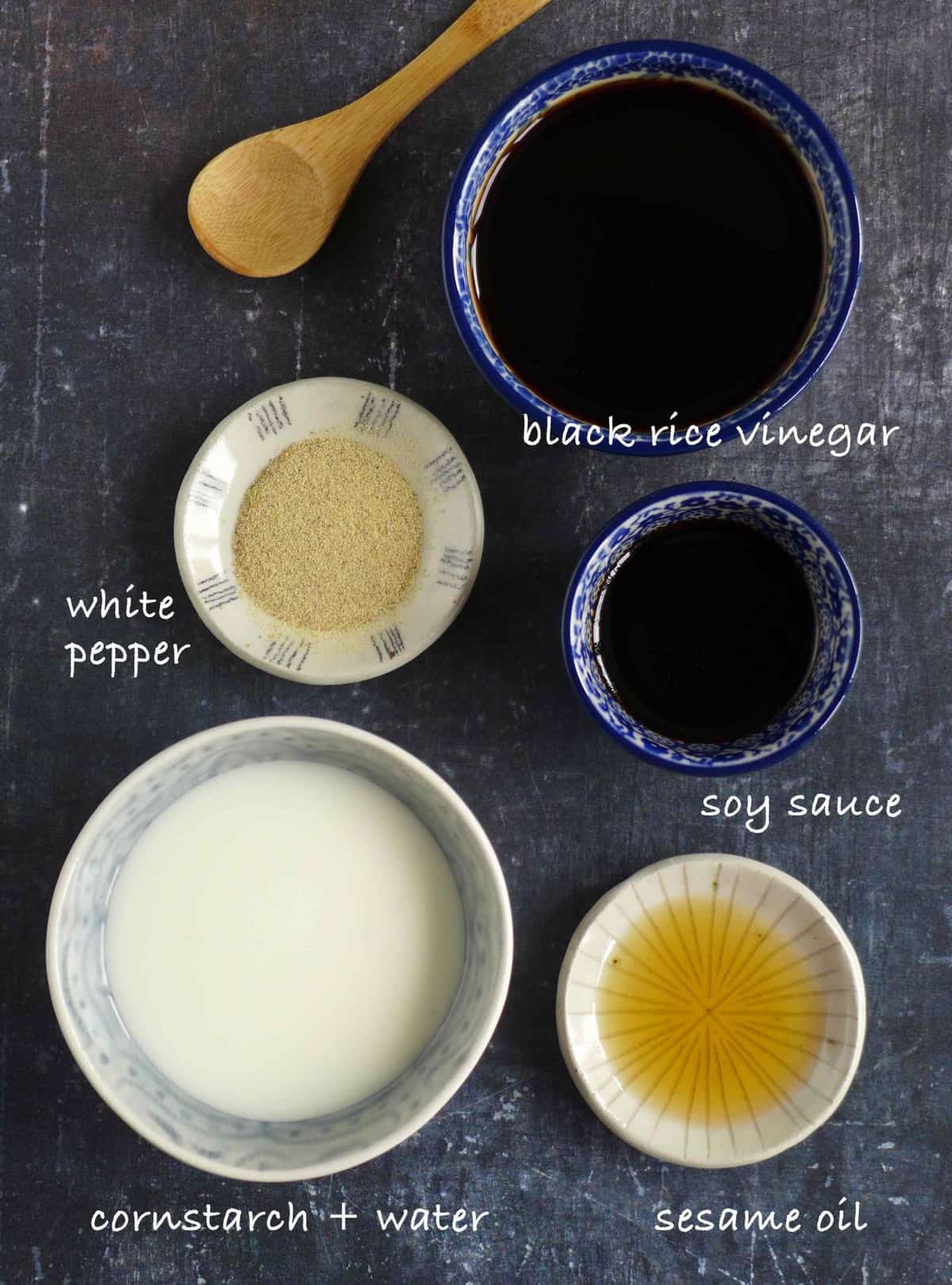
Needless to say, hot and sour flavour is the selling point of this classic soup. Tangy and warming, it does a brilliant job at awaking all your taste buds! To season, you’ll need four common condiments: black rice vinegar, ground white pepper, soy sauce and sesame oil (Cornstarch is required for thickening the soup).
Hot: White Pepper
I’ve introduced quite a few recipes that feature the classic “hot and sour” flavour combination, such as Hot and Sour Glass Noodle Soup from Sichuan cuisine, Hot and Sour Dumpling Soup from Xi’an and Hot and Sour Napa cabbage that’s popular across northern China. What makes hot and sour soup different from these dishes is that it calls for white pepper, instead of chili oil or dried chili, for creating the hot sensation.
Sour: Black Rice Vinegar
Chinese rice vinegar contributes to the sour taste. I personally prefer the black version to the white one as it offers a much more aromatic, palatable taste. Zhenjiang (Chinkiang) vinegar (镇江香醋) is a reputable variety that’s widely available outside China. It may look like balsamic vinegar but it tastes very different. So I wouldn’t recommend balsamic to be a substitute (you may find such suggestions online).
The amount of white pepper and vinegar suggested in my recipe is what works best for me (I adore bold flavours). Please feel free to adjust it if you like a milder taste.
🛎 Tip: To get the pungent hot and sour taste, make sure you add the seasonings right before serving as prolonged heating reduces the intensity of the flavour.
Cooking procedure
Once you’ve got all the ingredients at hand, the cooking part is easy! Here is how to proceed:
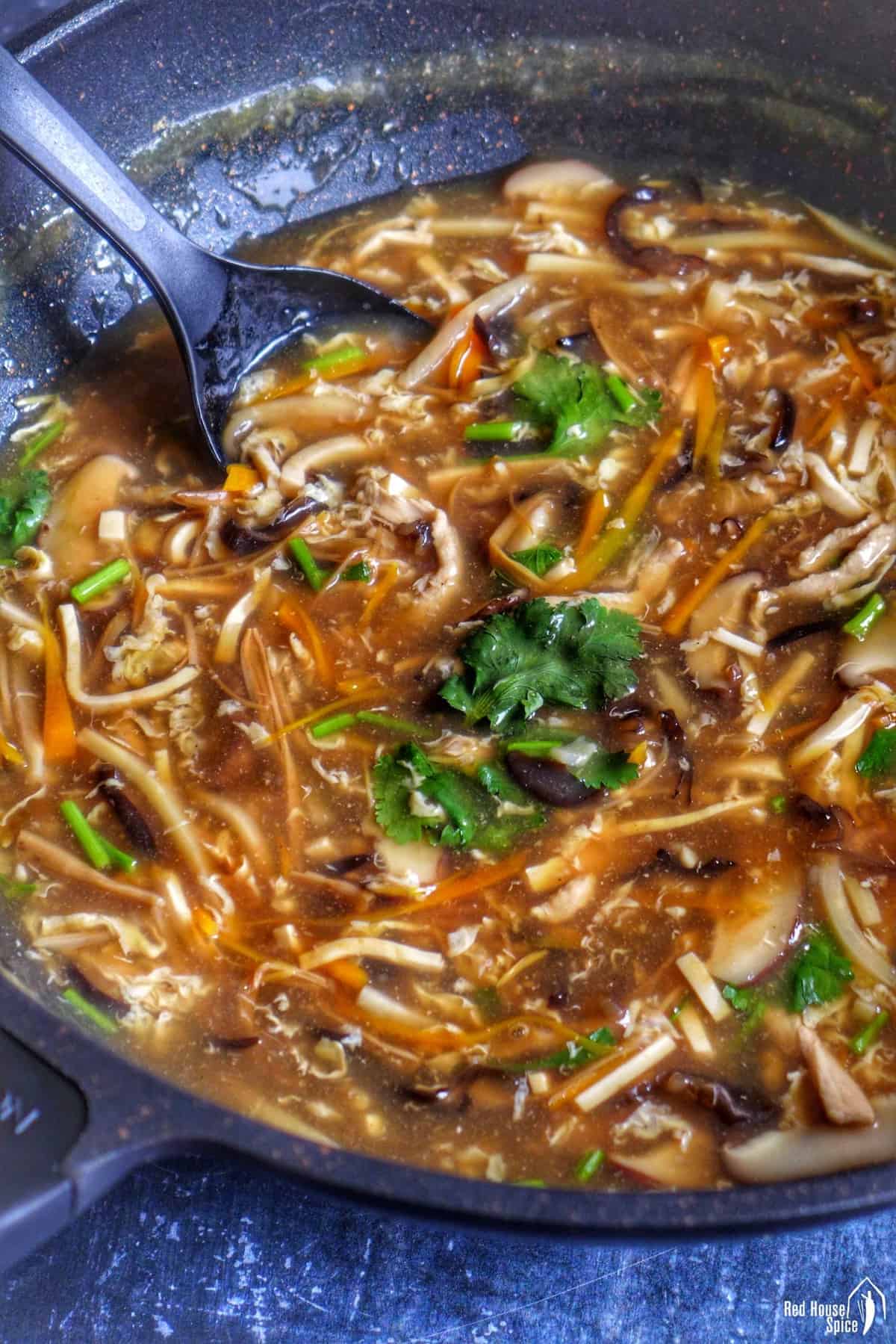
- Bring unsalted chicken or vegetable stock to a full boil (if unavailable, simply use water). Put in the marinated pork. Separate the strands with chopsticks then use a spoon to skim off the foam appearing on the surface.
- Add shiitake mushroom, wood ear, lily buds, carrot and bamboo shoots. Leave to cook for 2 mins or so.
- Turn down the heat to a gentle simmer. Mix cornstarch and water then slowly pour into the soup.
- Once the soup thickens, gently slide in the tofu and slowly pour in the lightly beaten egg.
- When the soup comes back to a boil, turn off the heat. Add black rice vinegar, soy sauce, white pepper and sesame oil. Give everything a gentle stir. Garnish with coriander or scallions.
🛎 Tip: When adding either the cornstarch slurry or the beaten egg into the soup, pour it in a thin stream in a circular motion. This way you can avoid it clumping up.

Other soup dishes
Looking for more comforting soup recipes, check out these classics:
📋 Recipe
Love this recipe? Please leave a 5-star 🌟🌟🌟🌟🌟 rating in the recipe card below & if you REALLY like it, consider leaving a comment as well!

Hot and Sour Soup, the Authentic Way (酸辣汤)
Ingredients
For the dried ingredients
- 5 dried shiitake mushroom - about ½ cup after rehydrating and slicing
- 5 g dried wood ear mushroom - about ½ cup after rehydrating and slicing
- 20 strands dried lily buds (lily flower)
For the pork
- 80 g lean pork - about ½ cup after slicing, see note 1
- ½ teaspoon cornstarch
- 1 teaspoon water
- ½ teaspoon neutral cooking oil
Other ingredients
- 40 g carrot - about ½ cup after slicing
- 50 g bamboo shoots - about ½ cup after slicing
- 100 g soft tofu, julienned - about ½ cup after slicing
- 1 egg
For the soup base
- 1000 ml unsalted chicken/vegetable stock, or water - about 4¼ cups
- 4 tablespoon cornstarch - mix with 4 tablespoon of water
For the seasoning
- 3 tablespoon black rice vinegar
- 1 tablespoon light soy sauce
- ½ teaspoon ground white pepper
- ½ teaspoon sesame oil
- Coriander or scallions - finely chopped
Instructions
Rehydrate the dried ingredients
- Soak dried shiitake mushroom, wood ear mushroom and lily buds in plenty of warm water until they enlarge and become soft. It takes at least 1 hour (soak overnight if you plan ahead).
- Slice the mushrooms into thin strips. Tear lily buds lengthways into thinner strands.
Marinate the pork
- Cut pork, against its grain, into thin strips. Mix with cornstarch and water, then coat with oil. Set aside.
Prepare other ingredients
- Slice carrot, bamboo shoots and tofu into thin strips. Lightly beat the egg.
Cook the soup
- In a wok or large pot, bring the stock (or water) to a full boil. Add the marinated pork. Quickly stir with chopsticks to separate the strands. Use a spoon to skim off the froth appearing on the surface.
- Add shiitake mushroom, wood ear, lily buds, carrot, bamboo shoots. Leave to cook for 2 mins or so.
- Turn down the heat and keep the soup at a gentle simmer. Mix cornstarch and water very well then slowly pour the slurry into the soup. Stir with a spoon/ladle.
- Once the soup becomes thick, gently slide in the tofu. Slowly pour in the egg in a circular motion.
Season the soup
- When the soup starts bubbling again, turn off the heat. Add black rice vinegar, soy sauce, white pepper and sesame oil (see note 2).
- Give everything a gentle stir. Garnish with coriander or scallions. Serve warm.
NOTES
NUTRITION
NUTRITION DISCLOSURE: Nutritional information on this website is provided as a courtesy to readers. It should be considered estimates. Please use your own brand nutritional values or your preferred nutrition calculator to double check against our estimates.



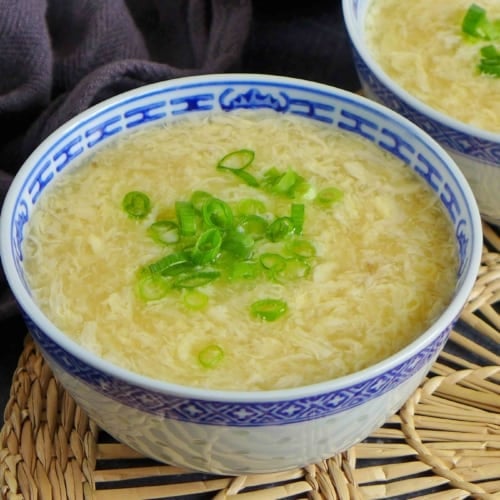

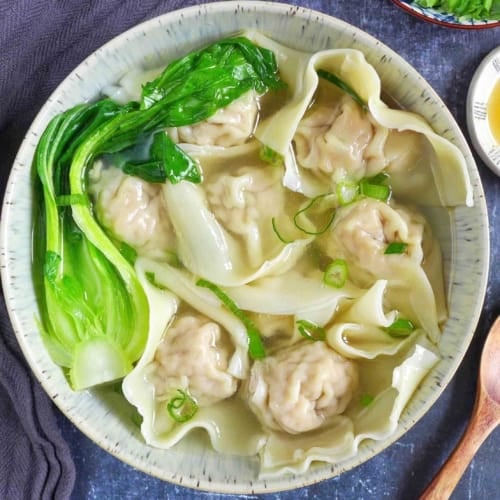
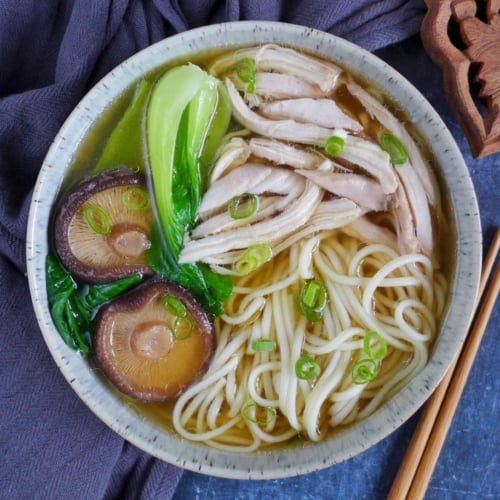

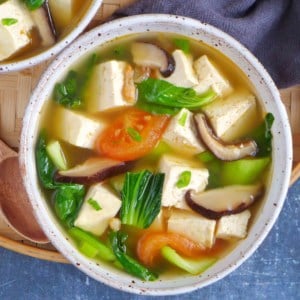


Wei Go,
Oh my gosh!! I was a little hesitant to make this soup. Half way through I was looking at the picture looking at my soup looking at the picture. Just did not look right.
Then, I added the spices. Words can not describe the levels of flavors and textures. I unfortunately inhaled the soup! AMAZING!!
Accolades to you and your father!
So happy to hear that Jeff!
I love this recipe, and since in the last years it’s not so dificult to find chinese ingredients in Spain it has quickly become part of my repertoire for rainy unpleasant days. Thanks a lot for sharing.
My pleasure to share, Maria! Glad you were able to source the ingredients and enjoyed the soup.
This is a wonderful recipe!! I looked for a recipe that seemed authentic for over a year. Not sure why your website didn’t pop up earlier. Now, I’ll be using your website whenever I want Chinese food. Thanks for a great website!!
So happy to hear your feedback Cindy! Hope you’ll find more inspiration on my blog.